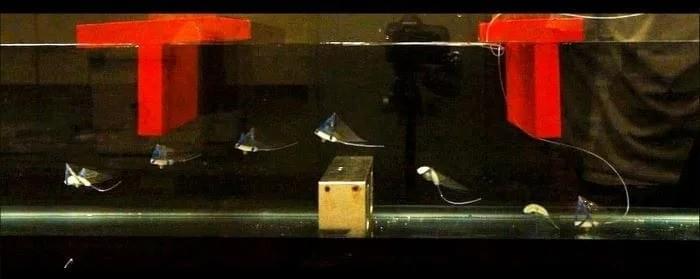“This is a highly engineered design, but the fundamental concepts are fairly simple,” said Dr. Jie Yin. “And with only a single actuation input, our robot can navigate a complex vertical environment.”
What influence can marine life have on robotics? This is what a recent study published in Science Advances hopes to address as a team of researchers from the University of Virginia and North Carolina State University have developed the fastest swimming soft robot by taking cues from manta ray fins. This study holds the potential to help researchers, engineers, and scientists develop faster and more efficient swimming soft robots that can be used for a variety of purposes worldwide.
This study builds on a 2022 study conducted by this same team of researchers that explored swimming soft robots that exhibited butterfly strokes, achieving a then-record of 3.74 body lengths per second, along with demonstrating high power efficiency, low energy use, and high maneuverability. For this new study, the researchers developed fins used by manta rays with the goal of achieving greater results than before. The fins are flexible when not in use but become rigid when the researchers pumped air into the silicone body that encompasses the soft robot.
In the end, the researchers not only achieved low energy use and maneuverability, but also broke their own record of body lengths per second at 6.8. Additionally, the manta ray-inspired swimming soft robot was able to avoid obstacles, which was an improvement from their 2022 study.









Leave a reply